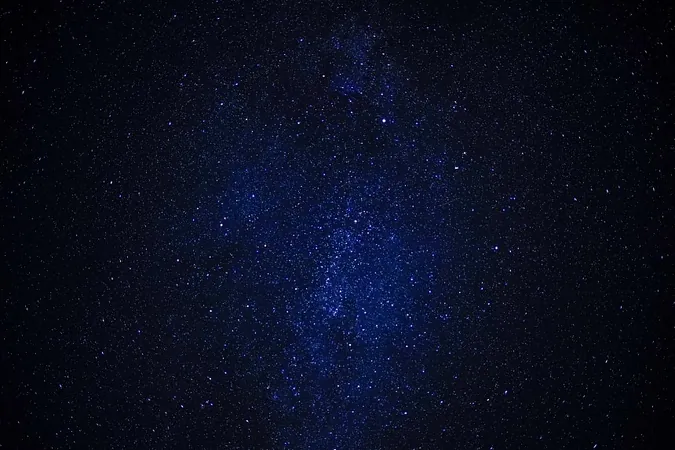
Groundbreaking Discovery: Webb Telescope Unveils Origins of Ancient Black Holes
2024-11-06
Author: Sarah
Introduction
In a thrilling revelation from the depths of the universe, NASA’s James Webb Space Telescope has discovered a supermassive black hole existing in the cosmos just 1.5 billion years after the Big Bang—significantly earlier than astronomers previously thought possible. This intriguing black hole, named LID-568, has a staggering mass of about 10 million times that of our sun, challenging existing theories about black hole formation and growth.
Formation of Supermassive Black Holes
Supermassive black holes, like the one lurking at the center of our Milky Way, known as Sagittarius A*, typically grow by consuming surrounding gas, dust, and even stars that drift too close. However, LID-568's emergence raises questions about how black holes could amass such a colossal mass in a relatively short astronomical timeframe.
Rapid Growth of LID-568
Hyewon Suh, an astronomer at the International Gemini Observatory and lead author of the study published in Nature Astronomy, noted, “The existence of LID-568 suggests that these behemoths experienced episodes of rapid growth, defying our traditional models of black hole evolution. This finding opens new avenues for understanding the mysteries of the early universe.
Exceeding the Eddington Limit
Webb's advanced observational capabilities reveal that LID-568 is accruing mass at over 40 times faster than the theoretical maximum known as the Eddington limit. This limit predicts the highest rate at which a black hole can consume material while balancing the outward pressure created by radiation against the immense gravitational pull of the black hole itself. Julia Scharwächter, a co-author of the study, explained, “Exceeding the Eddington limit implies there must be a previously unknown mechanism at play that enables such rapid accretion.
Origins of Primordial Black Holes
The origins of primordial black holes like LID-568 may trace back to catastrophic stellar events or the collapse of massive clouds of gas during the universe's infancy. Understanding these mechanisms contributes crucial insights into how supermassive black holes formed so early.
Detecting LID-568
Key to identifying the growth of these cosmic giants is the emission of X-rays, a form of high-energy radiation produced when material spiraling towards a black hole is superheated. The initial detection of LID-568 was made using NASA’s Chandra X-ray Observatory before in-depth analysis was performed with the Webb Telescope.
Significance of the Discovery
Dr. Suh emphasized, “LID-568 is remarkable not just for its mass but for its extraordinary growth rate at such an early stage of the universe.





 Brasil (PT)
Brasil (PT)
 Canada (EN)
Canada (EN)
 Chile (ES)
Chile (ES)
 España (ES)
España (ES)
 France (FR)
France (FR)
 Hong Kong (EN)
Hong Kong (EN)
 Italia (IT)
Italia (IT)
 日本 (JA)
日本 (JA)
 Magyarország (HU)
Magyarország (HU)
 Norge (NO)
Norge (NO)
 Polska (PL)
Polska (PL)
 Schweiz (DE)
Schweiz (DE)
 Singapore (EN)
Singapore (EN)
 Sverige (SV)
Sverige (SV)
 Suomi (FI)
Suomi (FI)
 Türkiye (TR)
Türkiye (TR)